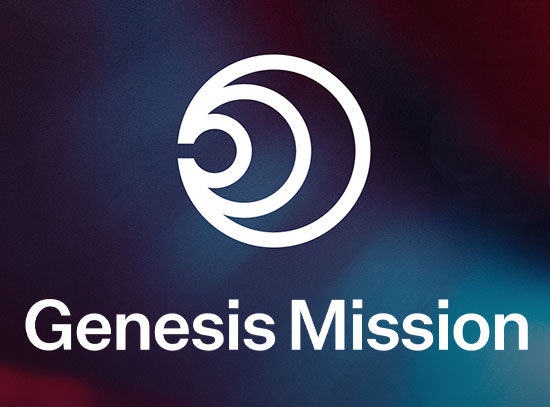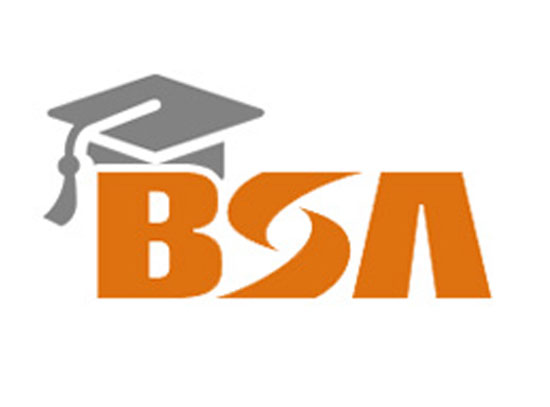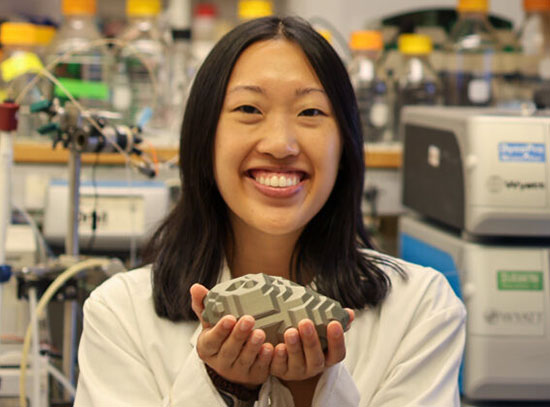New Cultural Resources Manager Preserves Lab's Unique History
Allison McGovern preserves artifacts and iconic buildings while offering interns a glimpse into the past at Brookhaven National Laboratory
August 4, 2025
 enlarge
enlarge
Allison McGovern, cultural resources manager on site, stands outside the Chemistry Building. (Kevin Coughlin/Brookhaven National Laboratory)
Clothing stains: Everyone gets them, and a little coffee or hot sauce on a white shirt is nothing to be ashamed of. But when the stains are on historic World War I U.S. Army jackets, that’s an issue. Nadia Abrego, an archaeology and history student from Sweet Briar College serving as a summer intern under Allison McGovern, the cultural resources manager at the U.S. Department of Energy’s (DOE) Brookhaven National Laboratory, is helping to assess the damage.
“Specifically, I am recommending conservation and preservation practices for WWI uniforms,” said Abrego. Items from the Lab’s pre-research history have experienced typical aging and deterioration from the passage of time, including rust stains from staples on wooden hangers, she noted. Under McGovern’s guidance in the DOE-sponsored Science Undergraduate Laboratory Internships (SULI) program, Abrego is exploring interdisciplinary strategies that bridge the sciences and humanities to keep the artifacts preserved for longer.
Stains are just one of the many challenges that McGovern and her team must face in preserving the history of Brookhaven National Laboratory as both a world-renowned research institution and the site of a former military base — and even before then. Her role is to mitigate changes to the historical sites that give Brookhaven Lab its unique identity.
And in helping to train the next generation of students like Abrego who will be crucial to continuing that preservation, she serves as a bridge between the past and the future.
“This role is a good fit for me,” said McGovern, who joined the Lab in 2024. “I was already familiar with the history and cultural resources of the area, and I’ve been able to build on that familiarity since being here.”
 enlarge
enlarge
Allison McGovern (middle) shows interns Nadia Abrego (left) and Sarah Robertson (right) a small collection of historical artifacts. (Kevin Coughlin/Brookhaven National Laboratory)
Preserving and studying the past
Most federal agencies and sites have a cultural resources manager, as required by the National Historic Preservation Act of 1966. Each site or organization has its own unique history to preserve. In the case of Brookhaven Lab, that history includes the site’s years as Camp Upton.
The Lab was founded in 1947 on the grounds of Camp Upton, a U.S. Army base used during both World Wars. During World War I, the site served as training camp for soldiers leaving the U.S. It transitioned to serving as a convalescent hospital for injured soldiers returning from overseas during World War II.
 enlarge
enlarge
Intern Nadia Abrego points at features on a WWI era helmet from the Brookhaven Lab collection. (Kevin Coughlin/Brookhaven National Laboratory)
“There used to be a history museum on site and family members of people with connections to Camp Upton would donate items to it,” McGovern said. Today, items from the collection are exhibited in rotating exhibit cases on site, and items are occasionally loaned short-term to local history museums for exhibition, McGovern explained.
“It’s interesting to think about how the Lab site has been rebuilt during different historic periods, as layers of history, and what traces remain from earlier periods within the landscape today,” McGovern said.
Of course, the Lab site’s history goes back even further than the Camp Upton days, and the remnants of that period are also McGovern’s responsibility. “I’m really interested in the cultural ecology of the historic landscape before it was even transformed into Camp Upton,” she said.
“Some historians used to think of the Pine Barrens as culturally sterile. But it has its own history, too,” McGovern said. “As local historians do more research, we’ve learned a lot about the activities that took place here.”
Sarah Robertson, a second SULI intern gaining a historical perspective under McGovern’s guidance this summer, is exploring archaeological data and artifacts that give a glimpse into the pre-Camp Upton period through archaeological materials analysis. By cataloguing ceramic and livestock remains, she hopes to understand how farmers who occupied the land produced their food and lived.
“Nineteenth century tenant famers lived in a homestead on the edge of what is the Brookhaven Lab property today,” said Robertson, a Barnard College student studying archaeological anthropology. “I’m combining archaeological research based on an excavation from about 20 years ago with some historical research about the economies of the area.”
McGovern advises the Lab on how to protect and steward cultural landscapes so they can be preserved for future research. It’s all part of her primary job: to keep all Lab building and development compliant with the federal laws that protect historic and archaeological sites.
 enlarge
enlarge
A collection of Brookhaven Lab artifacts from Camp Upton and earlier in the 19th century. Objects include a helmet, ceramic shards, and animal bone. (Kevin Coughlin/Brookhaven National Laboratory)
Historical buildings and evolution for science
One key component of the National Historic Preservation Act was to establish the National Register of Historic Places, which dictates the bulk of McGovern’s responsibilities.
“About 30 Brookhaven buildings, structures, and cultural landscapes are considered eligible for listing on the National Register of Historic Places,” McGovern said. For example, Berkner Hall with its unique European expressionist revival style, is considered eligible.
But while artifacts and some cultural landscape features can be carefully preserved, McGovern acknowledges that buildings must sometimes face changes — for example, to keep up with current building codes and to advance the scientific mission of the Laboratory.
“Changes do have to be made; the ultimate mission here at Brookhaven National Lab is science,” said McGovern.
She explained that she consults on building changes to preserve character-defining features while still making sure the buildings meet the needs of today’s scientists. For example, scientists, technicians, and administrators may propose minor changes to historic buildings to better suit their needs. They may need more bathrooms or larger meeting spaces — anything to make their research run smoother. McGovern joins planning meetings to consult on how to make those changes while minimally changing historical features.
 enlarge
enlarge
Barracks buildings (left) on Camp Upton, used during World Wars I and II. The Chemistry Building (right), shortly after its construction in the 1960s. (Brookhaven National Laboratory)
McGovern noted that the Lab’s iconic Chemistry Building, planned in the 1950s and built in the 60s, was among the first to be designed specifically with scientists’ needs in mind.
“The scientists and Lab leadership felt they had outgrown the use of the barracks buildings and needed a new type of building. The Chemistry Building is one of these thoughtful examples where scientists came together with architects to design a layout that made sense for the type of science they were doing,” she explained.
The architect, Marcel Breuer, designed the building with a central chase or utility corridor to create a division between office space and lab space, leaving more room for meetings and social gathering. “That layout became a model for science buildings and labs in other parts of the country,” McGovern said.
Abrego and Robertson, the two interns under McGovern’s guidance this summer, have both enjoyed learning about the Lab’s broader history as they pursue their respective projects.
 enlarge
enlarge
Nadia Abrego (left) and Sarah Robertson (right) stand by Camp Upton and early 19th century artifacts studied in their respective internship research projects. (Kevin Coughlin/Brookhaven National Laboratory)
“It has been good to see a model of the duties of a cultural resources manager,” Robertson said. “This research has given us a basic look at what our careers might look like.”
In addition to learning about the Lab, “They are learning about different opportunities that they could take as they develop their careers,” McGovern said. Referencing Abrego’s project exploring ways to conserve and display artifacts that honor the Lab’s military history, McGovern said, “The skills she’s gaining related to artifact conservation and preservation could be taken to a historical society, museum, or any institution with cultural resources management positions.”
McGovern embraces both the day-to-day responsibilities of her work and the opportunity to mentor students. “My work, which was established by the framework of the National Historical Preservation Act, protects our historic resources and these learning opportunities,” McGovern said.
For those curious to learn more about Brookhaven National Lab history, the cultural resources program has installed informational signage at the new Science and User Support Center, building 101. Employees and visitors can also view a selection of the military memorabilia collection in Berkner Hall.
Brookhaven National Laboratory is supported by the Office of Science of the U.S. Department of Energy. The Office of Science is the single largest supporter of basic research in the physical sciences in the United States and is working to address some of the most pressing challenges of our time. For more information, visit science.energy.gov.
Follow @BrookhavenLab on social media. Find us on Instagram, LinkedIn, X, and Facebook.
2025-22524 | INT/EXT | Newsroom









